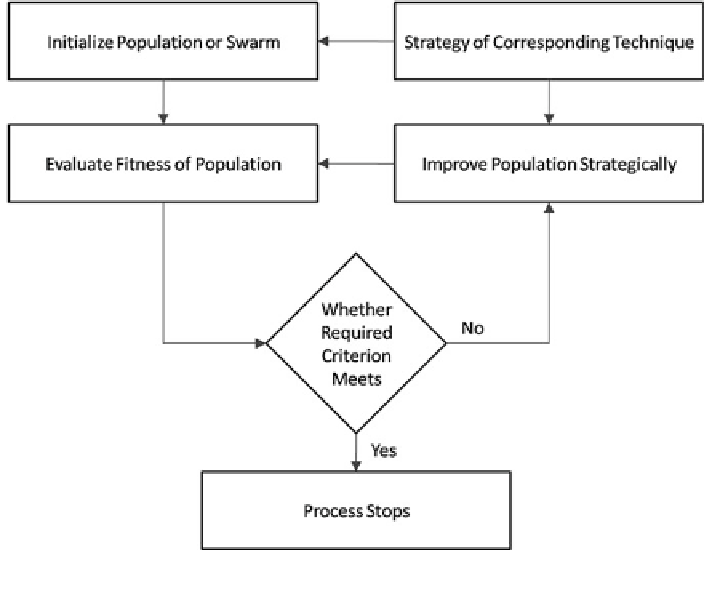Information Technology Reference
In-Depth Information
V
i
ð
t
þ
1
Þ
¼
V
i
ð
t
Þþ
C
1
R
1
½
X
pb
ð
t
Þ
X
i
ð
t
Þþ
C
2
R
2
½
X
gb
ð
t
Þ
X
i
ð
t
Þ
ð
1
Þ
X
i
ð
t
þ
1
Þ
¼
X
i
ð
t
Þþ
V
i
ð
t
þ
1
Þ
ð
2
Þ
Here, t denotes discrete time steps, X
i
ð
t
Þ
denotes the position vector of particle i and
V
i
ð
t
Þ
denotes the velocity vector of a particle in the solution space at time step t,
X
pb
ð
be
the position vector of global best particle so far. R
1
and R
2
are the vectors of uniform
random values in range (0, 1). Parameters C
1
and C
2
are the cognitive acceleration
coef
t
Þ
be the position vector of particle i
'
i's personal best position so far and X
gb
ð
t
Þ
cient and social acceleration coef
cient respectively. X
i
ð
t
þ
1
Þ
and V
i
ð
t
þ
1
Þ
denote new position and velocity vector at time step t
þ
1 respectively.
fitted into the generalized SI process as shown in
Fig.
1
. Only requirement is to represent particle set as vectors of position and
velocity. Once we have initial velocity and position of each individual particle, we
can update iteratively with strategic Eqs. (
1
) and (
2
) until the attain desired
approximated position. Actual strategy behind the PSO lies in these two equations.
This basic version of PSO has been modi
This strategy can be easily
ed signi
cantly over the years to improve
performance,
those have been studied in coming sections in perspective of
applications.
Fig. 1 Generalized flow diagram of swarm intelligence technique. Strategy of any SI technique can
be inserted into the generalized process once population is initialized in accordance of the strategy

Search WWH ::

Custom Search